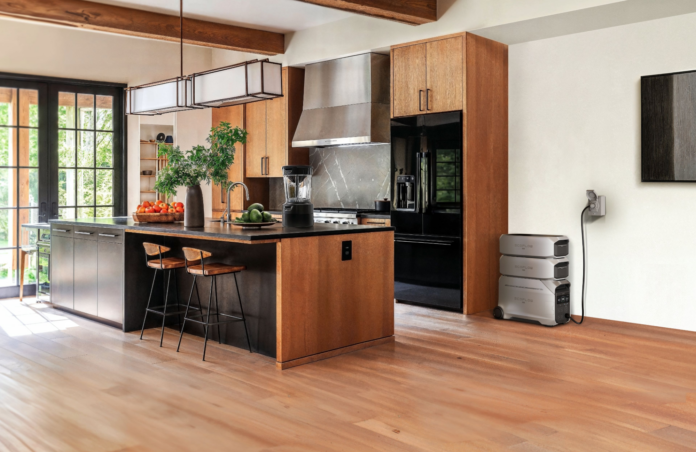Table of Contents
Inverter generators offer a more portable, energy-efficient method of meeting our energy needs. Choosing between an open-frame and closed-frame inverter generator is a difficult decision. Your choice can impact price, performance, maintenance, and user experience.
Learn about the nuances between the two types to make an informed decision that fits your energy requirements.
What Is an Open Frame Inverter Generator?
An open-frame inverter generator features a design where the internal components, such as the engine and alternator, are mounted on a visible frame without an external casing surrounding it. The exposed design makes these generators easily recognizable due to their rugged, industrial look. Some key characteristics of inverter generators include:
- Visibility: All mechanical parts are in plain view, making inspecting and maintaining the generator simple.
- Airflow: The open design ensures better ventilation, which helps regulate temperature.
- Weight: Open-framed models are typically lighter than their closed-frame counterparts, impacting portability.
What Is a Closed Frame Inverter Generator?
A closed-frame inverter generator, often called an encapsulated or enclosed generator, has a casing that covers the entire unit so you don’t see the engine, alternator, and other parts. Its design conceals the internal components, providing a sleeker, more modern appearance and reducing noise levels. The characteristics that make closed-frame inverter generators stand out include:
- Noise Reduction: The casing acts as a sound barrier, resulting in quieter operation.
- Protection: The enclosure protects internal components from dust, debris, and weather conditions, making it a wise choice for outdoor use.
- Aesthetics: This style offers a more polished and professional appearance, which can be helpful in residential settings.
What Is the Difference Between Open Frame and Closed Frame Inverter Generators?
We already know that inverter generators differ from traditional generators because they invert energy back to clean AC power. There are several differentiators between open-frame and closed-frame inverter generator models. While they perform the same role, their design allows them to vary in noise, access, portability, durability, safety, price, and efficiency.
Noise Levels
Open-frame models are generally louder due to the lack of an enclosing casing. It makes them ideal for outdoor use where noise is less of a concern, such as a food truck or construction site power source.
Closed-frame versions, however, are encased with sound-dampening materials as part of the shell, making them significantly quieter. A closed-frame inverter generator model is more suitable if noise is a primary concern, such as in residential or noise-sensitive environments.
If you need something that produces no noise at all, you may want to consider alternatives like portable power stations.
Engine Access
Because of their design, open-frame inverter generators are easier to access for maintenance and repairs. The open construction allows for straightforward inspection and maintenance servicing of the engine and other components.
Closed-frame models’ internal components are more challenging to access due to the protective casing surrounding them. When it’s time to perform maintenance, you’ll likely need to remove certain parts of the enclosure, which can add time.
Portability
If portability is important to you, you’ll appreciate that open-frame inverter generators are typically lighter, making them easier to carry and transport. Opt for this kind of inverter generator in settings where mobility is essential.
Where mobility isn’t a primary concern, you may not mind the heavier weight of a closed-frame model due to its covering. Still, some closed-frame inverter generators have built-in wheels and handles to make transportation easier.
Durability
Because open-frame inverter generators don’t have a covering to protect them from external elements, they can negatively affect longevity if used outside or in harsh environments. On the other hand, durability is a strength of closed-frame models because the casing adds an extra layer of protection. You won’t have to worry about dust, debris, and weather conditions potentially harming the inverter generator.
Price
Regarding price, an open-frame model will likely be more affordable because it includes a simpler construction and manufacturing process. If price isn’t an issue for you, you can justify the higher price of the closed-frame types by attributing it to the extra materials and engineering required to encase the machine and reduce excess noise.
However, open vs. closed-frame design isn’t the only factor that will influence price. Watts and amps may also impact the model’s cost, so keep in mind what kind of power you need.
Safety
Safety is of the utmost importance when considering which type of generator model to buy. Because open-frame models have exposed components, there may be a higher risk of accidentally damaging the machine.
Because there’s an extra protective layer on closed-frame versions, you can enjoy enhanced safety and a reduced risk of accidents because you’ll be shielded from hot and moving parts.
Frequently Asked Questions
The primary benefits of an open-frame inverter generator are its ease of maintenance and lower initial cost. This design allows straightforward access to the engine and other components, making routine checks and repairs easier. The open frame design also typically produces a lighter and more portable unit.
Open-frame inverter generators are generally cheaper than closed-frame models because they require fewer materials and less complex manufacturing processes. However, they’re also noisier and may be slightly less safe, contributing to their lower cost for consumers.
Final Thoughts
Making the right choice between an open-frame and a closed-frame inverter generator depends on your specific needs and circumstances. Open-frame models offer cost-effectiveness, ease of maintenance, and better portability, making them ideal for outdoor use and environments where noise is not a primary concern.
Closed-frame generators provide quieter operation, enhanced durability, and a sleeker appearance, perfect for residential areas and settings where aesthetics and noise reduction are essential. Whether you prioritize cost, convenience, or quiet operation, there’s an inverter generator out there that will meet your needs.
